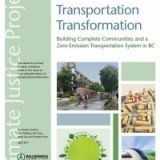From the Nanaimo Daily News – June 18, 2011
by Walter Cordery
The District of Lantzville has threatened Dirk Becker with legal
action if he doesn’t stop using his 2.5-acre farm as a commercial
enterprise.
The district has hired Victoria law firm Staples,
McDannold, Stewart to help enforce its residential zoning bylaw. People
can grow food for personal consumption, but they cannot sell the food
for profit, according to the district’s bylaws.
Lantzville has
tried to accommodate Becker by bringing in a temporary use permit bylaw
but he has refused to apply for one to allow him to continue farming
on his Fernmar Road home.
“Initially we gave them 90 days to apply for a TUP and then we
extended it to 180 days,” said Lantzville administrator Twyla Graff.
“He
hasn’t applied, (so) we have no choice but to pursue litigation as
Compassion Farm is in a clear violation of our zoning bylaw.”
Becker’s
farm is zoned “residential 1” and does not allow the use of the
property for other than those permitted under the existing bylaws,
states a letter from the district’s lawyers to Becker.
“You have
been made well aware of the violations of the bylaw, which include
using the lands for agricultural and commercial purposes.”
The
law firm goes on to say “please be advised that we have been instructed
to take legal action as may be necessary for court order requiring
that the use of the lands be brought into compliance with the bylaws of
the district without delay.”
The letter warns Becker that if he
doesn’t comply with the bylaw in three weeks, the law firm will
commence legal proceedings without further notice.
“You should
be further advised that if legal steps are required to be taken, we
will seek to recover legal costs expended by the district.”
Becker has no intention of shutting down his farm nor any intention of applying for a temporary use permit.
“When
council held a public community meeting last March to discuss TUPs,
the vast majority of those in attendance were opposed to them,” said
Becker.
“The problem with TUPs is that they are just that temporary and council can revoke them whenever they want.
“Also
Nicole (Shaw) and I sought legal counsel and we were told not to apply
for one as that could legitimize them. After eight months, we are
feeling harassed and tired.”
The district’s decision to threaten litigation irked Lantzville resident Glenda Barr Allard.
A
member of the Friends of Urban Agriculture in Lantzville, Barr Allard
is furious “the district is willing to spend scarce resources to hire a
law firm to take Compassion Farm to court.”
“The district, in my
opinion, has not listened to the community and are steam rolling over
the wishes of people in Lantzville.”
Read original article


